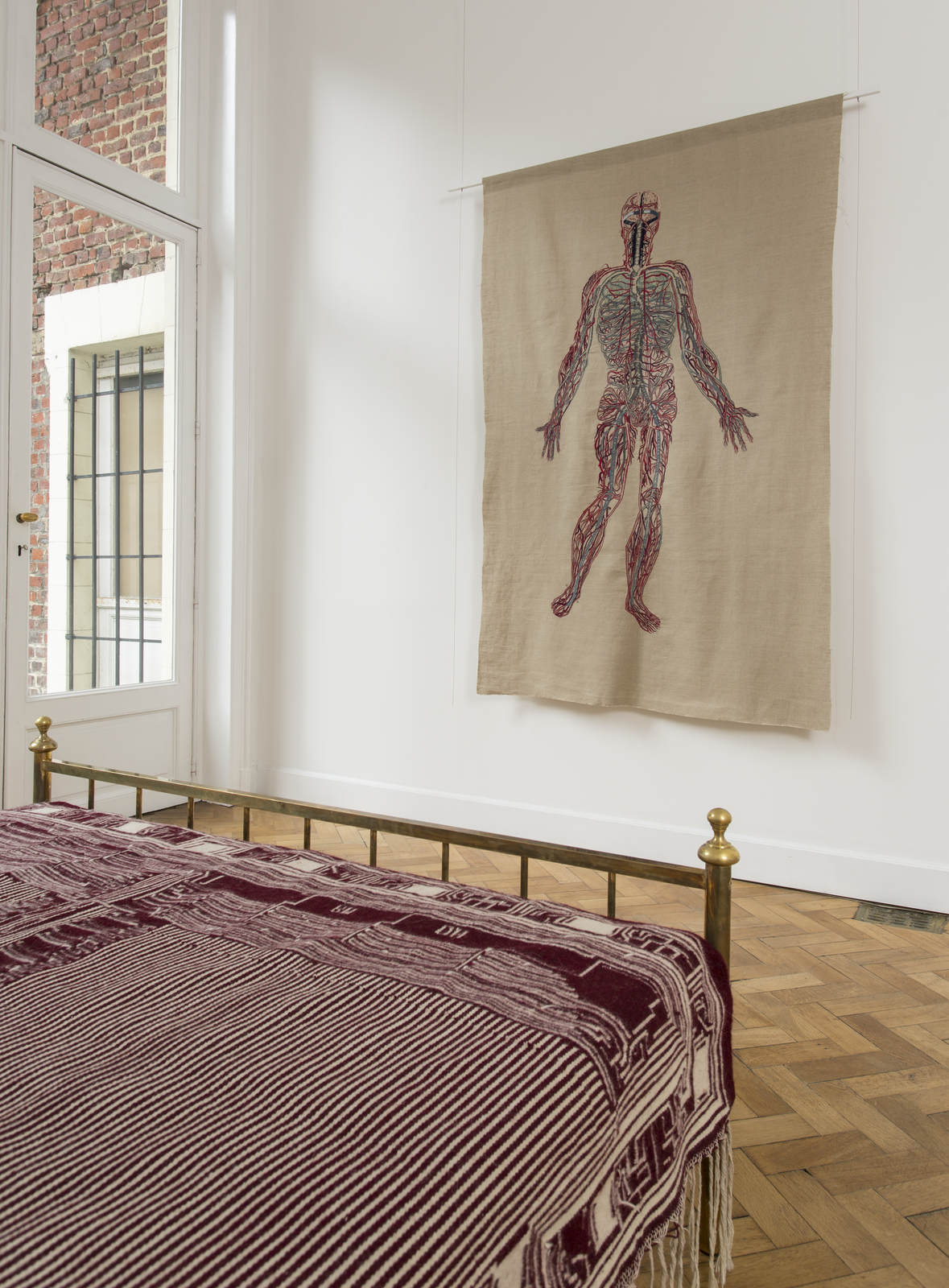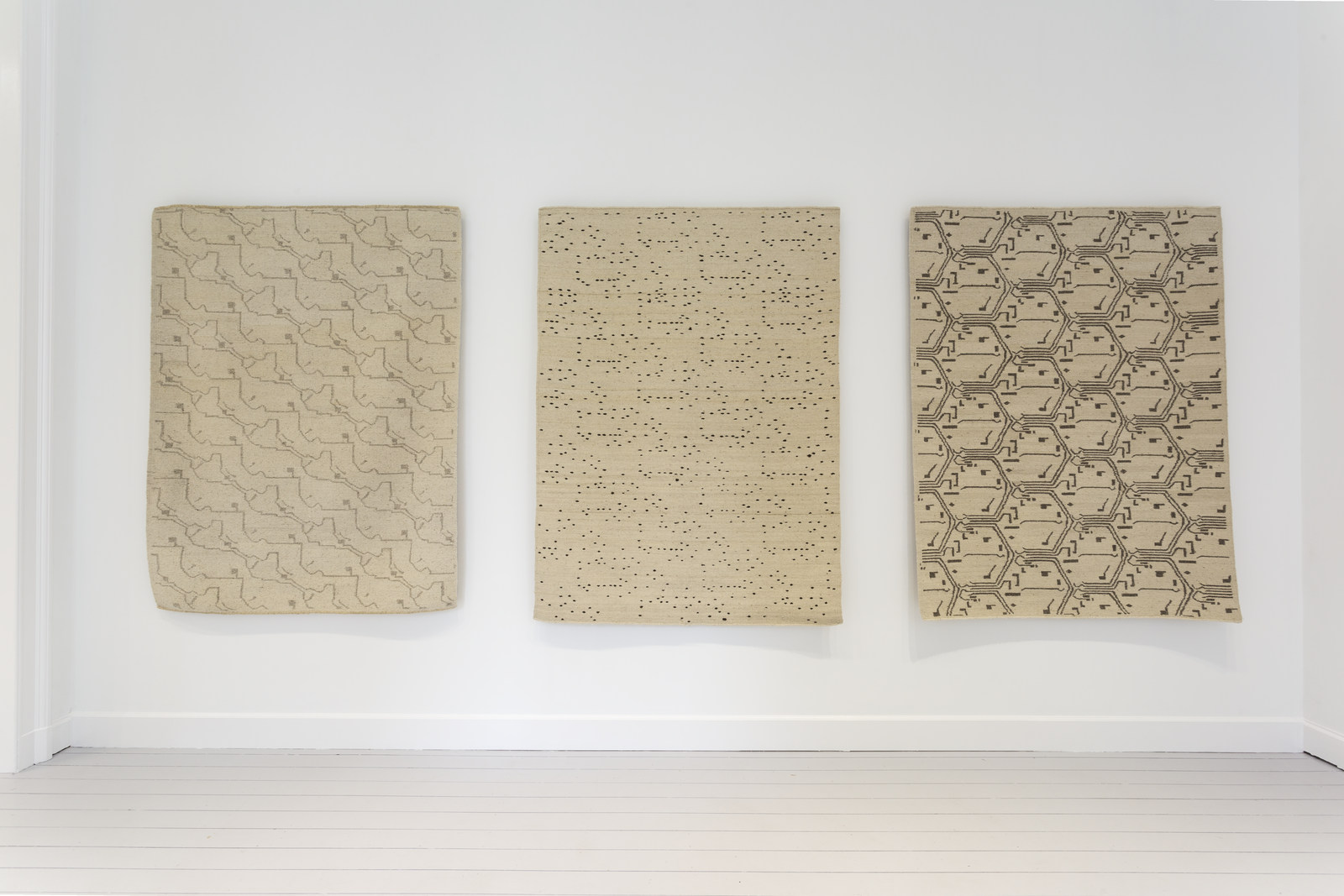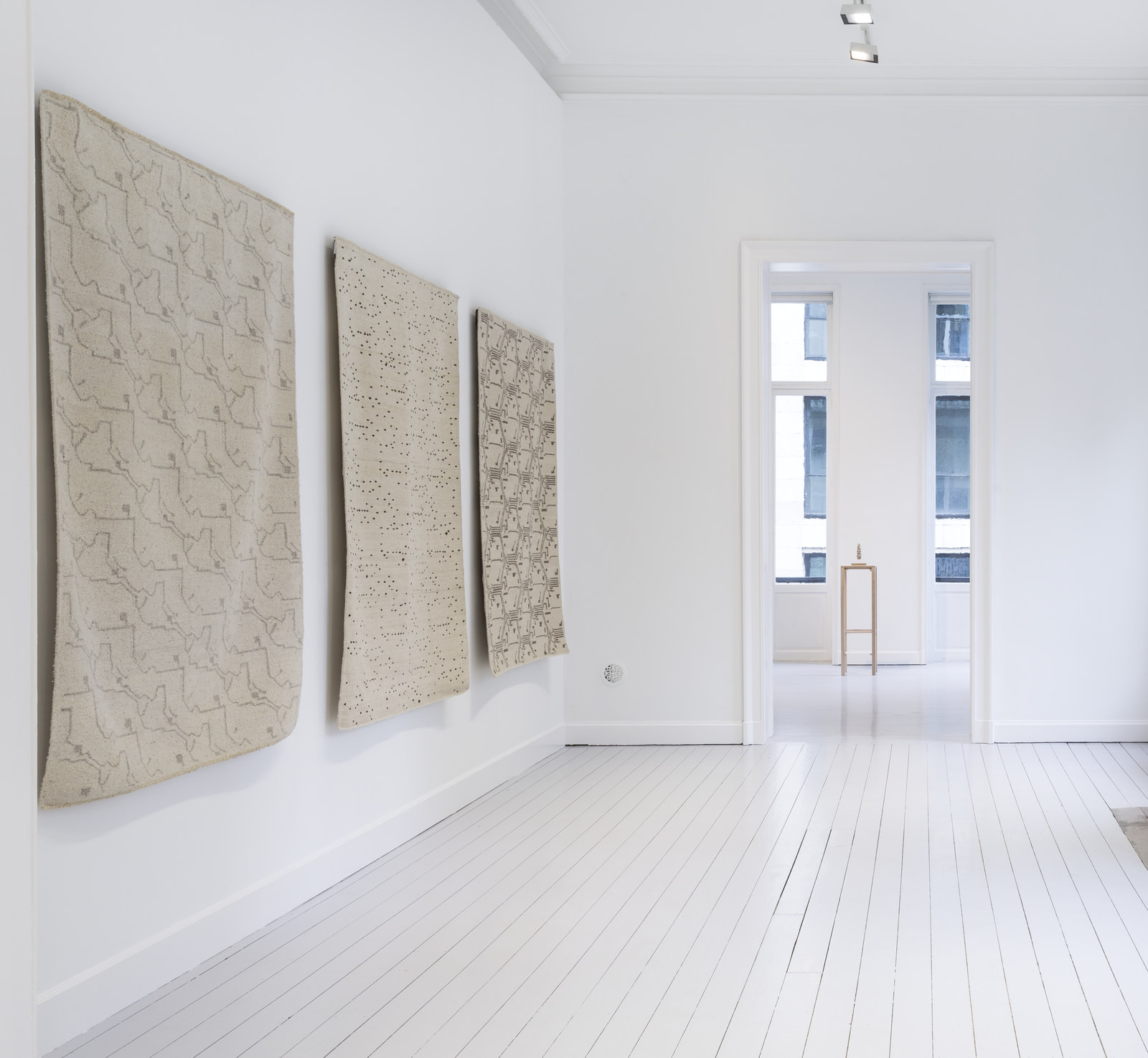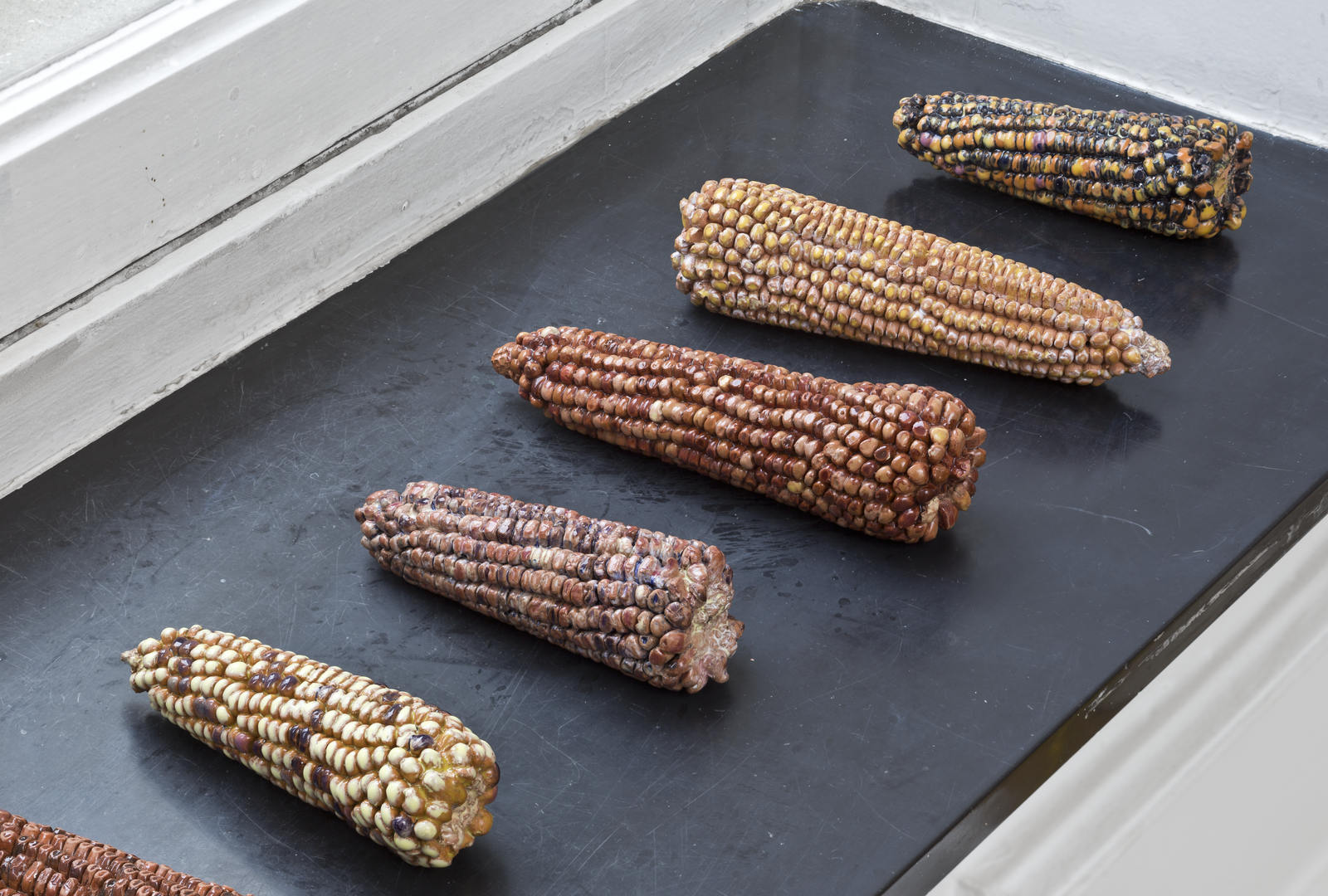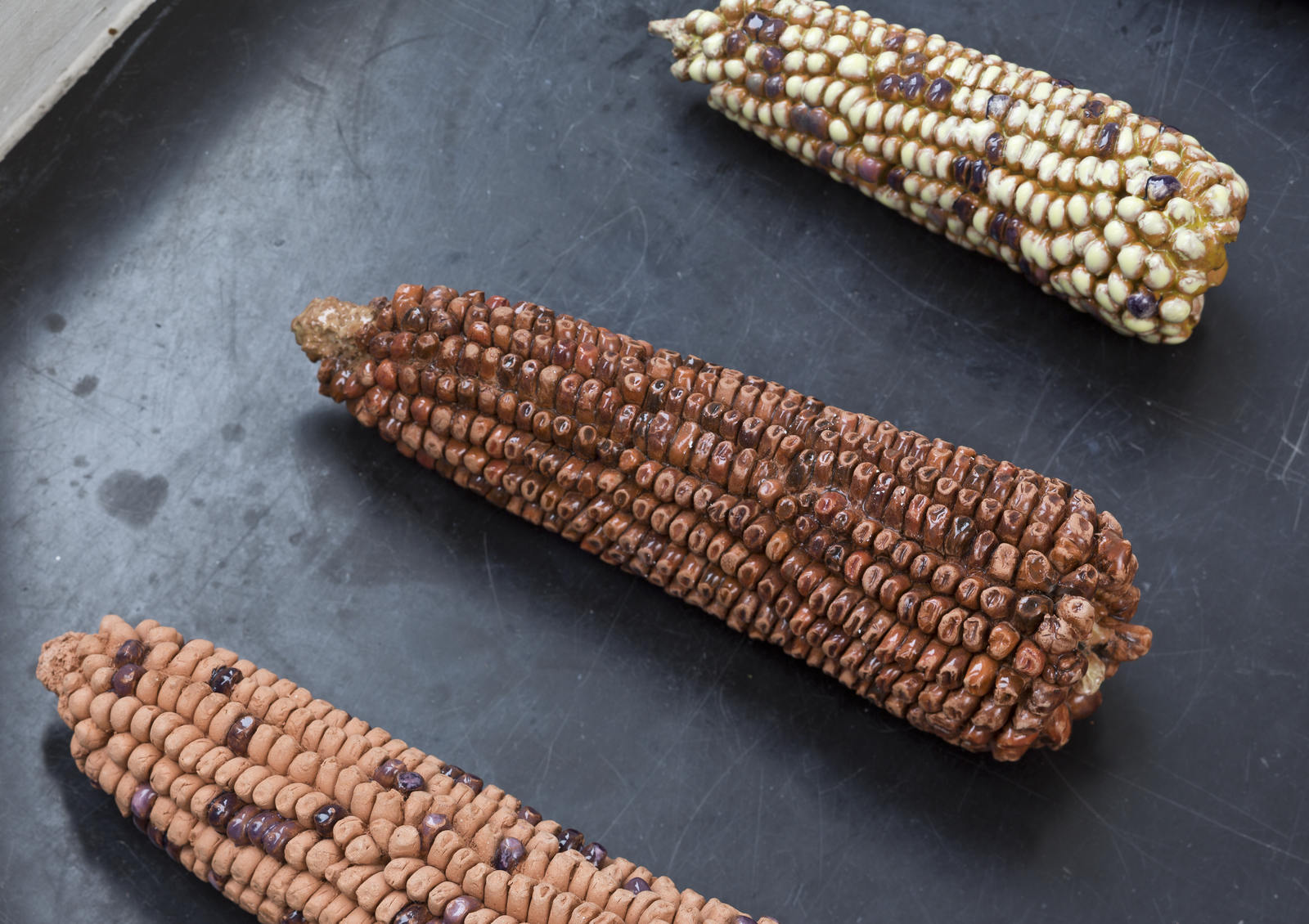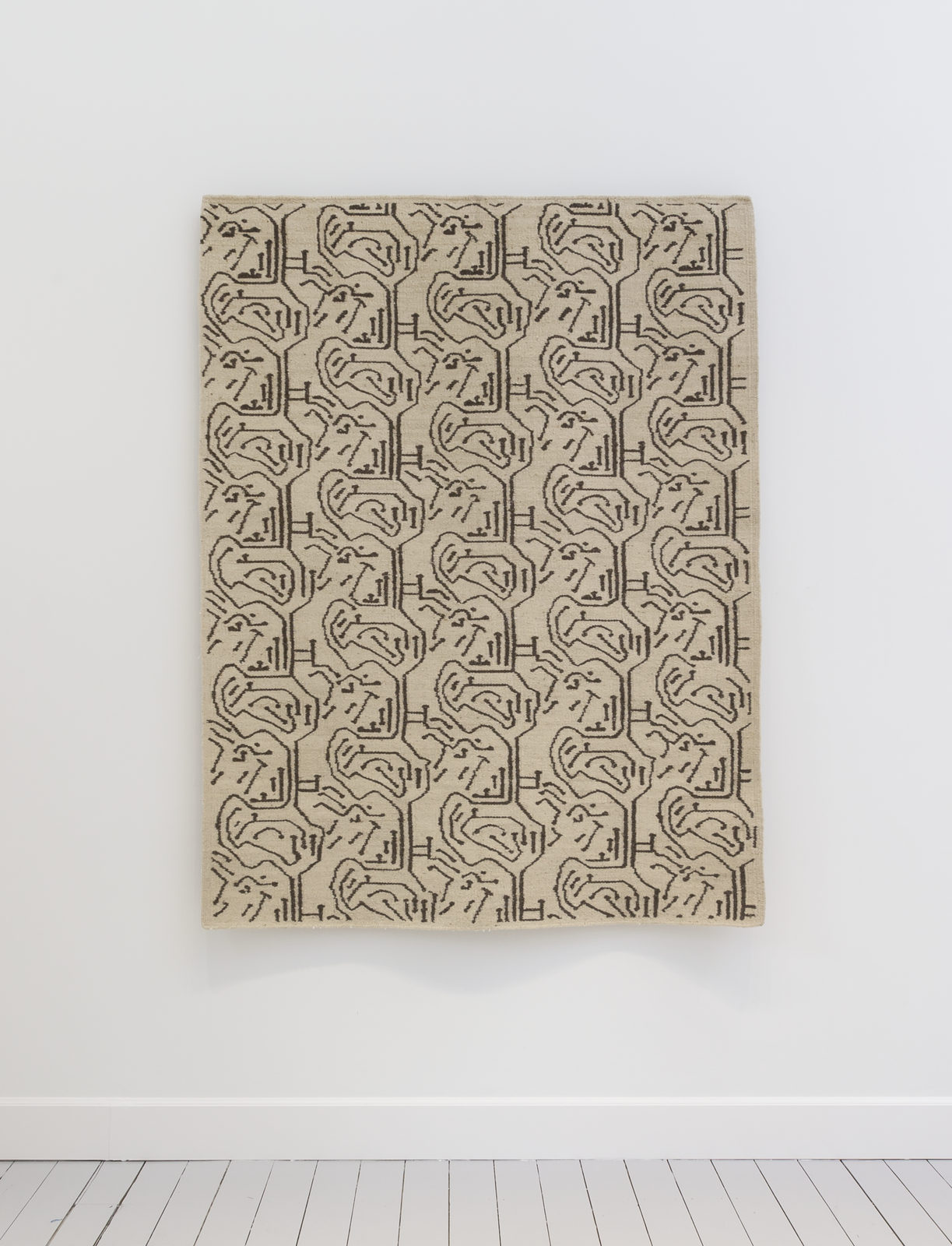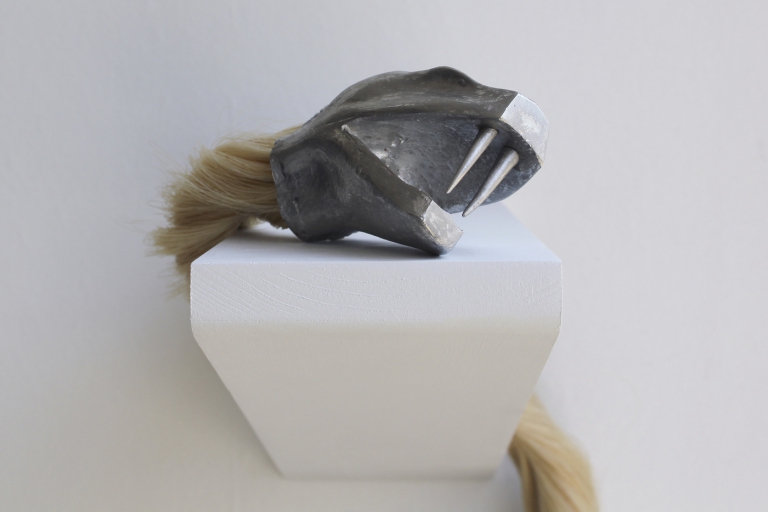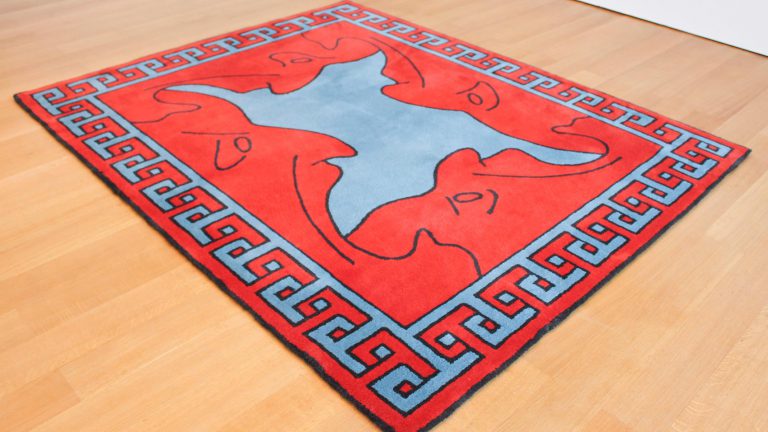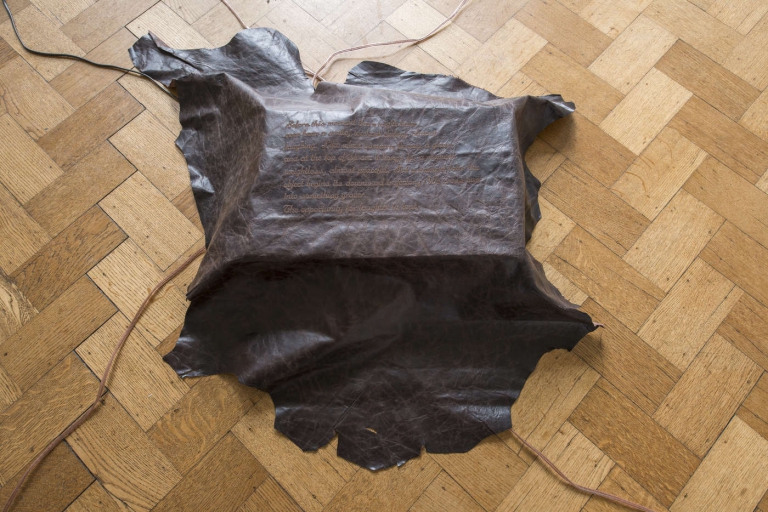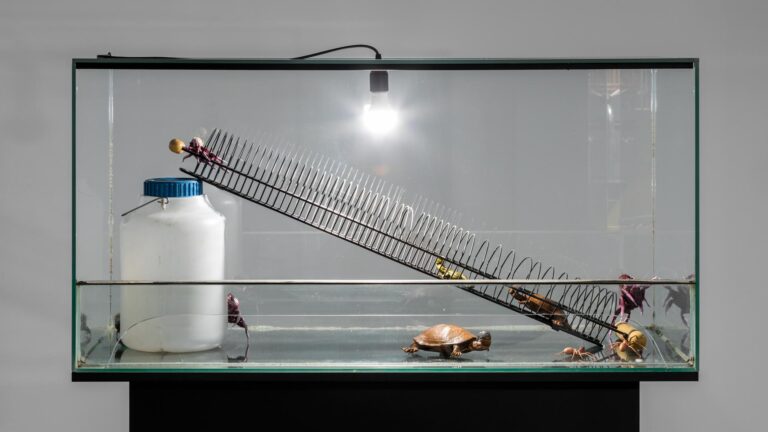Artist: Damián Ortega
Exhibition title: Textile
Venue: Gladstone Gallery, Brussels, Belgium
Date: October 1 – November 10, 2016
Photography: David Regen, all images copyright and courtesy of the artist and Gladstone Gallery, Brussels
Gladstone Gallery Brussels is pleased to exhibit new works in textile and ceramic by Damián Ortega. Beginning his career as a political cartoonist, Ortega has a longstanding interest in teasing out the underlying social and political narratives embedded in even the most commonplace materials. Fascinated by systems of construction and distribution, he analyzes the formal relationship between individual parts and their larger whole by deconstructing familiar objects to create new spatial arrangements and enabling each component to be analyzed and reconsidered. Creating works that are at once playful and deeply provocative, Ortega investigates the way things come apart, yet remain fundamentally connected.
With this exhibition, Ortega will show a new body of textiles for the first time. In development for over two years, the artist collaborated with different work shops in Mexico City, Oaxaca, and San luis de la Paz, Guanajuato, all of whom incorporate wildly differing materials and techniques. This suite reveals systems in both process and form: Through a range of subjects, from the human body, to microchips, to maps, Ortega elucidates processes of interconnection by creating reticles and grids. These textiles depict complex amalgams of the temporal, spatial, historical imagery, both representational and abstract. The artist writes, “I have been experimenting with ways of measuring time through weavings…textiles are marked by amounts of work, and the time of the work being done is also marked by the body’s rhythm. Some of my textiles are a system for measuring time, something of a music score, a calendar or a code.”
In addition, Ortega will exhibit a new body of ceramic work that remarks on his interest in craft and the traditions of popular folk culture, including rows of baked brick with serpentine forms interrupting or uniting the grid and aerial topographic maps in circular flats of clay. In a particular grouping of fired clay sculptures, Ortega recreates dried ears of corn to explore complex systems of biodiversity, tracing how random patterns of genetics color individual kernels differently. These intricate designs marked on the ear of corn become an unknown code, transforming common agriculture into a form of technology and the medium of codified information.
Damián Ortega was born in 1967 in Mexico and currently lives and works in Mexico City and Berlin. He has had solo exhibitions at notable international venues including: Museo Reina-Sofia, Madrid; Museu de Arte Moderna do Rio de Janeiro; HangarBicocca, Milan; Museo Jumex, Mexico City; The Cleveland Museum of Art; the Barbican, London; the Institute of Contemporary Art, Boston; Tate Modern, London; Kunsthalle Basel; Institute of Contemporary Art, Philadelphia; and Centre Pompidou, Paris. Ortega participated in the 55th Venice Biennale (2013); the 27th São Paulo Biennial (2006); the 4th Berlin Biennial (2006); and the 50th Venice Biennale (2003). His work is currently on view through October at the Fruitmarket Gallery, Edinburgh, and in “El cohete y el abismo” at Palacio de Cristal-Museo Reina Sofia, Madrid.
Damián Ortega, Textile, 2016
Installation view at Gladstone Gallery Brussels
Damián Ortega, Textile, 2016
Installation view at Gladstone Gallery Brussels
Damián Ortega, Sistema circulatorios, 2013 (detail), Cotton thread on linen, hand embroidery by Alejandro Palafox, Fabric: 85 x 54 3/4 inches (216 x 139 cm), Design: 62 1/4 x 33 1/2 inches (158 x 85 cm)
Damián Ortega, Sistema circulatorios, 2013 (detail), Cotton thread on linen, hand embroidery by Alejandro Palafox, Fabric: 85 x 54 3/4 inches (216 x 139 cm), Design: 62 1/4 x 33 1/2 inches (158 x 85 cm)
Damián Ortega, Plano de la ciudad de México, Recoridos Fluidos, 2013, Cotton thread on linen, hand embroidery by Alejandro Palafox, Fabric: 48 7/8 x 37 inches (124.1 x 94 cm), Design: 11 7/8 x 11 inches (30.2 x 27.9 cm)
Damián Ortega, Codigo bipolar, 2016, Glazed clay 2 parts: 11 x 15 3/4 x 6 inches (28 x 40 x 15 cm) each
Damián Ortega, Textile, 2016
Installation view at Gladstone Gallery Brussels
Damián Ortega, Textile, 2016
Installation view at Gladstone Gallery Brussels
Damián Ortega, Microchip I, 2012, Wool loomed using a foot treadle by Román Gutiérrez, 84 5/8 x 115 3/8 inches (214.9 x 293.1 cm)
Damián Ortega, Textile, 2016
Installation view at Gladstone Gallery Brussels
Damián Ortega, Textile, 2016
Installation view at Gladstone Gallery Brussels
Damián Ortega, Codigo genético 1(left) and Codigo genético 2 (right) , 2016, Glazed clay with wooden pedestal Sculpture: 9 1/2 x 6 x 6 inches (24 x 15 x 15 cm) Pedestal: 45 2/8 x 13 6/8 x 13 6/8 inches (110 x 35 x 35 cm)
Damián Ortega, Textile, 2016
Installation view at Gladstone Gallery Brussels
Damián Ortega, Textile, 2016
Installation view at Gladstone Gallery Brussels
Damián Ortega, Proceso Constructivo, 2013, Wool weaved by Eduardo Francisco Rodríguez., Set of 6, TBC microchip divided into six constructive layers, 77 3/4 x 59 1/4 inches (197.5 x 150.5 cm)
Damián Ortega, Textile, 2016
Installation view at Gladstone Gallery Brussels
Damián Ortega, Textile, 2016
Installation view at Gladstone Gallery Brussels
Damián Ortega, Proceso Constructivo, 2013, Wool weaved by Eduardo Francisco Rodríguez, Set of 6, TBC microchip divided into six constructive layers, 77 3/4 x 59 1/4 inches (197.5 x 150.5 cm)
Damián Ortega, Proceso Constructivo, 2013, Wool weaved by Eduardo Francisco Rodríguez, Set of 6, TBC microchip divided into six constructive layers, 77 3/4 x 59 1/4 inches (197.5 x 150.5 cm)
Damián Ortega, Textile, 2016
Installation view at Gladstone Gallery Brussels
Damián Ortega, Textile, 2016
Installation view at Gladstone Gallery Brussels
Damián Ortega, Codigo bipolar, 2016, Glazed clay, 11 x 15 3/4 x 6 inches (28 x 40 x 15 cm) each
Damián Ortega, Codigo bipolar, 2016, Glazed clay, 11 x 15 3/4 x 6 inches (28 x 40 x 15 cm) each
Damián Ortega, Codigo bipolar, 2016, Glazed clay, 11 x 15 3/4 x 6 inches (28 x 40 x 15 cm) each
Damián Ortega, Codigo bipolar, 2016, Glazed clay, 11 x 15 3/4 x 6 inches (28 x 40 x 15 cm) each
Damián Ortega, Codigo bipolar, 2016, Glazed clay, 11 x 15 3/4 x 6 inches (28 x 40 x 15 cm) each
Damián Ortega, Codigo bipolar, 2016, Glazed clay, 11 x 15 3/4 x 6 inches (28 x 40 x 15 cm) each
Damián Ortega, Codigo bipolar, 2016, Glazed clay, 11 x 15 3/4 x 6 inches (28 x 40 x 15 cm) each
Damián Ortega, Textile, 2016
Installation view at Gladstone Gallery Brussels
Damián Ortega, Proceso Constructivo, 2013, Wool weaved by Eduardo Francisco Rodríguez, Set of 6, TBC microchip divided into six constructive layers, 77 3/4 x 59 1/4 inches (197.5 x 150.5 cm)
Damián Ortega, Proceso Constructivo, 2013, Wool weaved by Eduardo Francisco Rodríguez, Set of 6, TBC microchip divided into six constructive layers, 77 3/4 x 59 1/4 inches (197.5 x 150.5 cm)



